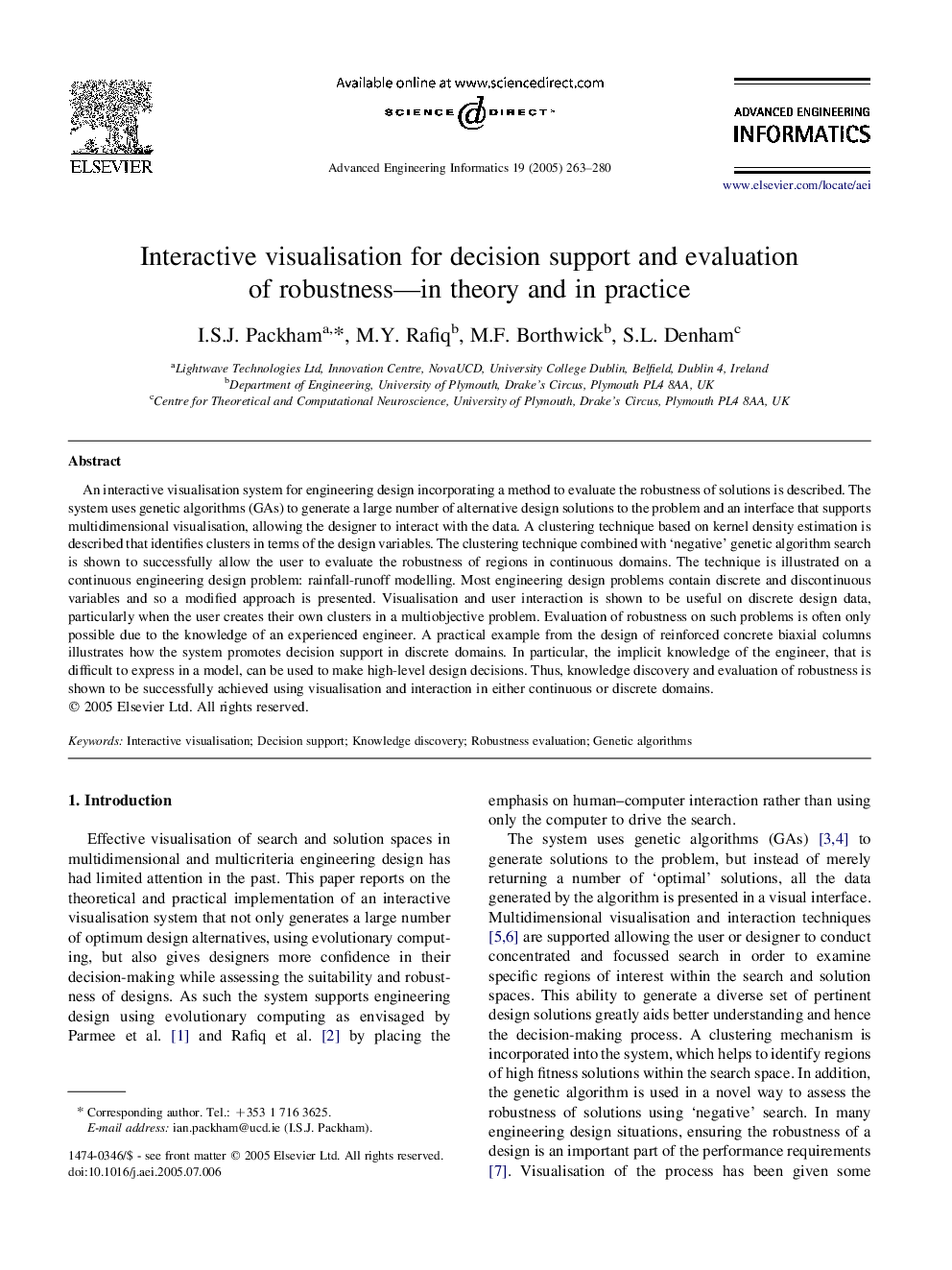| Article ID | Journal | Published Year | Pages | File Type |
|---|---|---|---|---|
| 10281828 | Advanced Engineering Informatics | 2005 | 18 Pages |
Abstract
An interactive visualisation system for engineering design incorporating a method to evaluate the robustness of solutions is described. The system uses genetic algorithms (GAs) to generate a large number of alternative design solutions to the problem and an interface that supports multidimensional visualisation, allowing the designer to interact with the data. A clustering technique based on kernel density estimation is described that identifies clusters in terms of the design variables. The clustering technique combined with 'negative' genetic algorithm search is shown to successfully allow the user to evaluate the robustness of regions in continuous domains. The technique is illustrated on a continuous engineering design problem: rainfall-runoff modelling. Most engineering design problems contain discrete and discontinuous variables and so a modified approach is presented. Visualisation and user interaction is shown to be useful on discrete design data, particularly when the user creates their own clusters in a multiobjective problem. Evaluation of robustness on such problems is often only possible due to the knowledge of an experienced engineer. A practical example from the design of reinforced concrete biaxial columns illustrates how the system promotes decision support in discrete domains. In particular, the implicit knowledge of the engineer, that is difficult to express in a model, can be used to make high-level design decisions. Thus, knowledge discovery and evaluation of robustness is shown to be successfully achieved using visualisation and interaction in either continuous or discrete domains.
Keywords
Related Topics
Physical Sciences and Engineering
Computer Science
Artificial Intelligence
Authors
I.S.J. Packham, M.Y. Rafiq, M.F. Borthwick, S.L. Denham,
